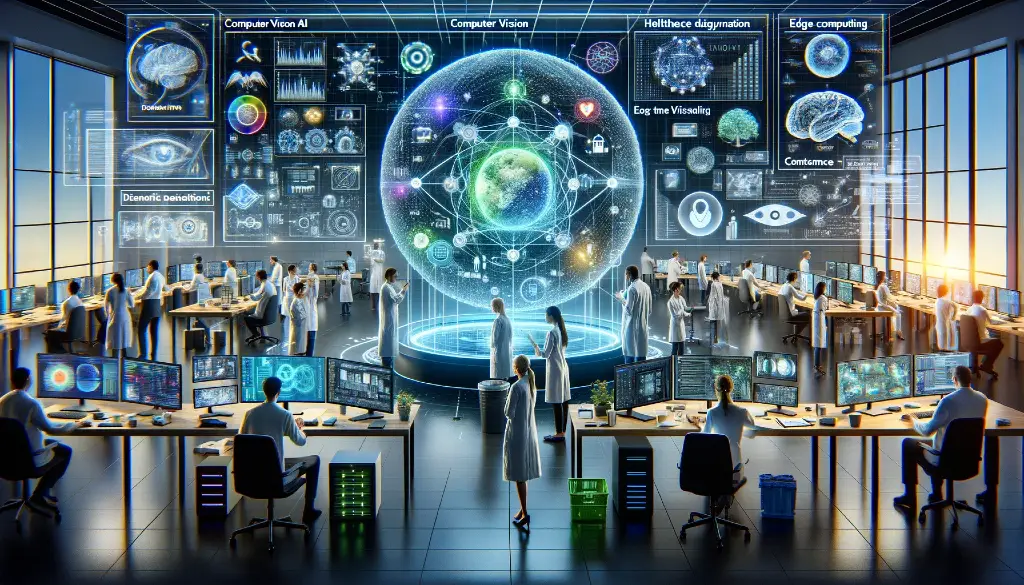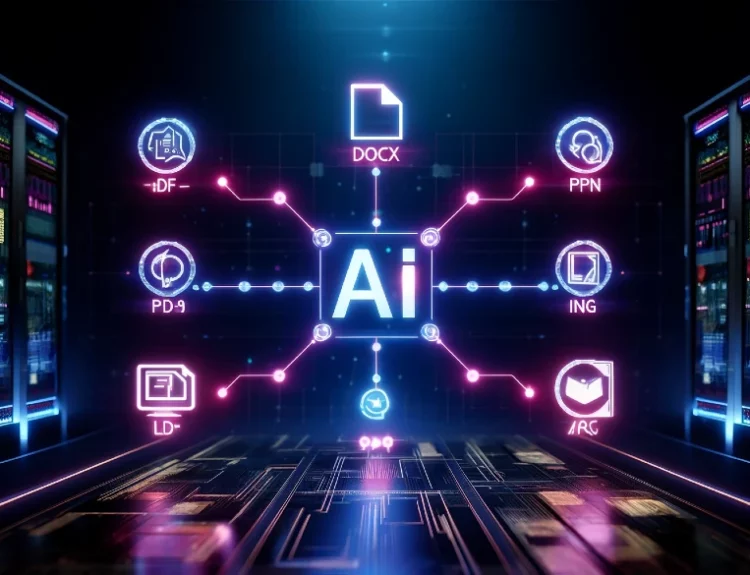Introduction to Computer Vision
In a world increasingly driven by technology, one innovation stands out as particularly transformative: computer vision AI. Imagine machines with the ability to interpret and understand visual information, just like humans do. From self-driving cars navigating through city streets to medical imaging systems detecting diseases with unparalleled accuracy, computer vision AI is revolutionizing industries and reshaping our daily lives.
In this blog, we embark on an exploration of the leading companies at the forefront of this groundbreaking technology. Join us as we delve into the dynamic landscape of computer vision AI, uncovering the innovative solutions, industry leaders, and emerging trends that are driving the future of artificial intelligence.
From revolutionizing healthcare and improving safety to enhancing customer experiences and unlocking new possibilities, the potential of computer vision AI knows no bounds. So, fasten your seatbelt and get ready to dive into the fascinating world of computer vision AI technology and the companies leading the charge towards a smarter, more connected future.
Understanding Computer Vision AI Technology
Computer vision AI technology represents a revolutionary approach to artificial intelligence that enables machines to interpret and understand visual information from the world around them. At its core, computer vision AI mimics the human visual system, allowing machines to perceive and comprehend images and videos in a manner akin to human perception. Here’s a closer look at the fundamental aspects of computer vision AI technology:
- Definition and Significance: Computer vision AI technology refers to the ability of machines to analyze and interpret visual data, such as images and videos, to extract meaningful information and make intelligent decisions. This technology holds immense significance across various industries, including healthcare, automotive, retail, manufacturing, and more, where visual data plays a critical role in decision-making processes.
- Capabilities and Applications: Computer vision AI technology encompasses a wide range of capabilities and applications, including image recognition, object detection, image segmentation, facial recognition, gesture recognition, and scene understanding. These capabilities enable machines to perform tasks such as identifying objects and patterns, detecting anomalies, recognizing faces and gestures, and understanding the context of visual scenes.
- Role in Driving Advancements: Computer vision AI technology is driving advancements across diverse domains by enabling innovative applications and solutions. In healthcare, computer vision AI is revolutionizing medical imaging, enabling early detection of diseases and personalized treatment planning. In automotive, it powers autonomous vehicles, enhancing safety and efficiency on the roads. In retail, it enables personalized shopping experiences and automated inventory management. In manufacturing, it streamlines production processes and quality control. These examples underscore the transformative impact of computer vision AI technology on various industries and its potential to reshape the way we live, work, and interact with the world around us.
As we continue to explore the landscape of computer vision AI technology, we’ll delve deeper into its capabilities, applications, and the leading companies driving innovation in this field.

The Landscape of AI Companies in Computer Vision
The landscape of AI companies in computer vision is vibrant and diverse, with numerous players contributing to the advancement of this transformative technology. These companies range from established tech giants to innovative startups, each bringing unique expertise, approaches, and solutions to the field of computer vision AI. Here’s an overview of the key players shaping the landscape of AI companies in computer vision:
- Tech Giants: Leading technology companies such as Google, Microsoft, Amazon, and Facebook have made significant investments in computer vision AI technology. These companies leverage their vast resources, research capabilities, and access to large datasets to develop cutting-edge computer vision solutions for a wide range of applications, from image recognition and augmented reality to autonomous vehicles and smart devices.
- Startups and Scaleups: The computer vision AI startup ecosystem is thriving, with a growing number of startups and scaleups emerging to address niche markets and specialized use cases. These companies often focus on specific verticals or applications, such as healthcare imaging, retail analytics, industrial automation, or security surveillance. By leveraging innovative algorithms, deep learning techniques, and domain-specific expertise, these startups are driving innovation and pushing the boundaries of what’s possible with computer vision AI.
- Research Institutions and Academia: Research institutions and academia play a crucial role in advancing computer vision AI technology through groundbreaking research and collaboration with industry partners. Leading universities and research labs around the world conduct cutting-edge research in computer vision, contributing to the development of new algorithms, techniques, and methodologies that push the boundaries of computer vision AI.
- Specialized Solutions Providers: In addition to tech giants and startups, there are specialized solutions providers that offer tailored computer vision AI solutions for specific industries or applications. These companies focus on addressing the unique needs and challenges of their target markets, providing customized solutions and services that deliver tangible value to their customers.
Overall, the landscape of AI companies in computer vision is dynamic and evolving, driven by a diverse ecosystem of players with varying expertise, capabilities, and market focus.
Case Studies: Applications of Computer Vision AI Technology
Examining real-world applications of computer vision AI technology provides invaluable insights into its transformative potential across various industries. Here are several compelling case studies showcasing the diverse applications and benefits of computer vision AI:
- Healthcare Imaging: Computer vision AI is revolutionizing medical imaging by automating the analysis and interpretation of medical images such as X-rays, MRIs, and CT scans. For example, Aidoc, an AI healthcare startup, developed a solution that uses computer vision AI to analyze medical images and detect abnormalities, enabling radiologists to prioritize critical cases and expedite diagnosis and treatment.
- Retail Analytics: In the retail industry, computer vision AI is empowering retailers to enhance customer experiences, optimize operations, and increase sales. Amazon Go, Amazon’s cashier-less convenience store, utilizes computer vision AI to track customers and items as they move through the store, enabling seamless checkout experiences and real-time inventory management.
- Autonomous Vehicles: Computer vision AI plays a crucial role in enabling autonomous vehicles to perceive and navigate the world around them. Waymo, a subsidiary of Alphabet Inc., has developed a self-driving car platform that uses computer vision AI to recognize and interpret objects, pedestrians, and road signs, enabling safe and efficient autonomous driving.
- Industrial Automation: In manufacturing and industrial settings, computer vision AI is driving automation and efficiency improvements. For example, Deepomatic, a computer vision AI company, developed a solution that uses computer vision AI to monitor manufacturing processes and detect defects in real-time, enabling proactive quality control and reducing production costs.
- Security Surveillance: Computer vision AI is enhancing security surveillance systems by enabling intelligent video analysis and threat detection. BriefCam, a video analytics company, uses computer vision AI to analyze surveillance footage and identify suspicious behavior or events, enabling security personnel to respond quickly and effectively to potential threats.
These case studies illustrate the diverse applications and benefits of computer vision AI technology across industries. From healthcare and retail to transportation and manufacturing, computer vision AI is revolutionizing processes, improving outcomes, and driving innovation.
Emerging Trends and Innovations
As computer vision AI technology continues to evolve rapidly, several emerging trends and innovations are reshaping the landscape and driving its future development. Here are some key trends and innovations to watch:
- Deep Learning Advancements: Deep learning techniques, particularly convolutional neural networks (CNNs), have been instrumental in advancing computer vision AI technology. Emerging trends in deep learning include the development of more efficient and scalable architectures, such as transformer-based models like Vision Transformer (ViT), and the integration of multimodal learning approaches that combine visual and textual information for improved understanding.
- Edge Computing: Edge computing is gaining traction as a way to process and analyze visual data closer to the source, reducing latency and bandwidth requirements. This trend enables real-time decision-making and inference on edge devices such as cameras, drones, and IoT devices, opening up new possibilities for applications in smart cities, autonomous vehicles, and industrial automation.
- Generative Adversarial Networks (GANs): GANs are a class of deep learning models that have shown promise for generating realistic images and videos. In computer vision AI, GANs are being used for tasks such as image synthesis, super-resolution, and style transfer, enabling the creation of high-quality visual content and enhancing the capabilities of computer vision systems.
- Ethical AI and Bias Mitigation: With the increasing adoption of computer vision AI technology, there is growing awareness of the ethical implications and biases inherent in AI systems. Emerging trends focus on developing ethical AI frameworks, algorithms, and tools to mitigate bias, promote fairness, and ensure transparency and accountability in computer vision AI applications.
- Domain-Specific Solutions: There is a growing demand for domain-specific solutions tailored to the unique requirements and challenges of different industries and applications. Emerging trends include the development of specialized computer vision AI solutions for healthcare imaging, retail analytics, agricultural monitoring, and environmental conservation, among others, to address specific use cases and deliver targeted value.
- Augmented Reality (AR) and Virtual Reality (VR): Computer vision AI technology is driving advancements in augmented reality (AR) and virtual reality (VR) experiences, enabling immersive and interactive environments. Emerging trends in AR and VR include the integration of computer vision AI for real-time object recognition, tracking, and interaction, enhancing the realism and usability of AR and VR applications.
These emerging trends and innovations underscore the dynamic nature of computer vision AI technology and its potential to revolutionize industries and reshape our world.
Conclusion
As we conclude our exploration of the leading companies in computer vision AI technology, it’s evident that we’re witnessing a remarkable era of innovation and advancement. From healthcare to retail, autonomous vehicles to industrial automation, computer vision AI is revolutionizing industries and reshaping the way we interact with technology.
The emerging trends and innovations discussed highlight the dynamic nature of computer vision AI technology and its potential to drive future growth and development. As companies continue to invest in research, development, and collaboration, we can expect to see even more transformative applications and solutions emerge in the years to come.
At the forefront of this technological revolution is Verdict, an AI-enhanced web search platform that is redefining the way we access and interact with information online. Verdict leverages cutting-edge AI algorithms to deliver personalized and relevant search results, helping users find the information they need quickly and efficiently.
With Verdict, users can harness the power of AI to discover new insights, uncover hidden connections, and make informed decisions. Whether you’re a researcher looking for the latest advancements in computer vision AI or a business owner seeking to leverage AI technology to drive innovation, Verdict provides the tools and resources you need to succeed in today’s digital age.
As we look towards the future, the potential of computer vision AI technology is limitless. By embracing innovation, collaboration, and ethical principles, we can harness the transformative power of AI to create a better, more connected world for all. Join us on this journey of discovery and innovation, and together, let’s shape the future of artificial intelligence.










